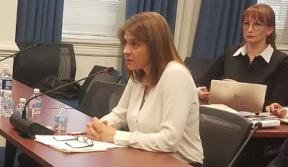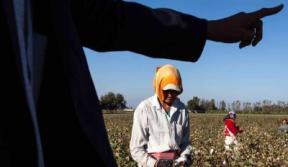Extraction predominantly involves
the Third World. Resources are stolen from
people who live on resource-rich land. Once these people are left with no value they are then
exploited. This is why extraction has become synonymous with exploitation.
Along with the millions of adults forced into labor in extractive industries, millions of children all
over the world are forced into child labor.
Production
involves the use of toxic chemicals. The results are health issues among factory
workers, many whom are working women of reproductive age, working closely with
toxic chemicals, carcinogens and more. The women who do this kind of work
are women with no other option. The reason is that the erosion of local
environments and economies in the extractives stage ensures a constant supply
of people with no other option. Globally, thousands of people move every day
from environments that have sustained them for generations, into cities, many
of whom live in slums, looking for work, no matter how tough that work may be.
Thus it is not just resources that are wasted along this system, but it is
people and whole communities too.
Distribution
means the selling all these products as quickly as possible. The goal is to
keep the prices down, keep people buying, and keep the inventory moving. Prices
are kept down by low wages and little health insurance for the workers in the
distribution centers. Costs are externalized meaning that the real costs of
these goods are not captured in the price. In other words, we are not paying for
the stuff we buy BUT rather the people who lost their natural resource space
through extraction, people in the production factories with increasing health
issues, and even children in the extractives industry in the Democratic Republic of the Congo who have paid with
their future. Children in the DRC are forced to mine coltan, a metal that we need for our cell phones and laptops. Workers in the
distribution industry have paid with having to cover their own health
insurance. Therefore workers are exploited so that we may get products cheaper. None of these labor costs are recorded in any accounts file hence the
meaning of externalizing costs.
The Story of Stuff paints a very bleak picture of our world today. Even a liberal newspaper such
as the New York Times argues in a recent article that there was not one positive thing
about capitalism in the whole video. Affluent children in classrooms might take
the critique personally and switch off to learning; however others have been
seen to take the message seriously. The video would be more effective if it
were to scare children less and give them tools on how to make things better.
However, advocates argue that even though the video is scary
it gets people to think about how to move forward. Sustainability and Equity
are the new kinds of thinking that Annie Leonard pushes. The Story of Stuff is a lot easier
to watch and comprehend than other cautionary messages such as Al Gore’s
Inconvenient Truth.
For teachers, The Story of Stuff has become an alternate resource and a hit in classrooms across the US, where
textbooks are inefficient in dealing with the subject. After all, the main
point of video is to get us to look at the bigger picture and think and about
the consequences of our actions. We then can ask questions such as “How can we
make a difference, what tools do we need, or even how it can bring people from
all walks of life together?”
I think that a story like this is an opportunity to start
thinking and get involved in human rights and environmental campaigns that can
bring about sustainability and equality in our world. As a labor rights
organization, ILRF supports this initiative and should definitely seize the
opportunity to align itself with this far reaching message. Think about it. Get involved. Visit www.storyofstuff.com and browse the
website and its affiliates for ways to make a difference.
Let us know what you think of the video and its analysis in
a comment below.


Comments
re: Stuff to Think About
Intersting video. I like her perspective on advertising... that's it's designed to make up feel unhappy about the 'stuff' we do have. Well written Stu!